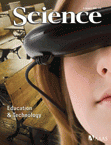Jan 26, 2009
WideNoise
One of the thing I hate most about living in a big city is the noise from road traffic. The most disturbing types of noise for me are (in order of irritation):
1) motorbike noise
2) emergency noise
3) noise from construction/demolition activites

In addition of being very unpleasant and harmful for our hearing system, noise can have negative impact on general health. For example, Swedish researchers have found that the exposure to even relatively low levels of noise may increase increase the risk of cardiovascular disease, heart attack and high blood pressure.
Even though we are accustomed to this background noise, we should at least be aware of how dangerous it is. Guys at WideTag have developed an iPhone/iPod touch application - WideNoise - that allows to monitor the noise level in the space surrounding the user. The noise data are collected and displayed on an online map. I think that this application could be also used by employers to monitor workplace noise.
Good job guys!


11:36 Posted in Information visualization, Locative media, Wearable & mobile | Permalink | Comments (0) | Tags: widenoise
Jan 20, 2009
Spatial aspects of bodily self-consciousness
Spatial aspects of bodily self-consciousness.
Conscious Cogn. 2008 Dec 22;
Authors: Lenggenhager B, Mouthon M, Blanke O
Visual, somatosensory, and perspectival cues normally provide congruent information about where the self is experienced. Separating those cues by virtual reality techniques, recent studies found that self-location was systematically biased to where a visual-tactile event was seen. Here we developed a novel, repeatable and implicit measure of self-location to compare and extend previous protocols. We investigated illusory self-location and associated phenomenological aspects in a lying body position that facilitates clinically observed abnormal self-location (as on out-of-body experiences). The results confirm that the self is located to where touch is seen. This leads to either predictable lowering or elevation of self-localization, and the latter was accompanied by sensations of floating, as during out-of-body experiences. Using a novel measurement we show that the unitary and localized character of the self can be experimentally separated from both the origin of the visual perspective and the location of the seen body, which is compatible with clinical data.
06:02 Posted in Telepresence & virtual presence | Permalink | Comments (0) | Tags: presence, self-consciousness
Functional network reorganization during learning in a brain-computer interface paradigm
Functional network reorganization during learning in a brain-computer interface paradigm.
Proc Natl Acad Sci U S A. 2008 Dec 1;
Authors: Jarosiewicz B, Chase SM, Fraser GW, Velliste M, Kass RE, Schwartz AB
Efforts to study the neural correlates of learning are hampered by the size of the network in which learning occurs. To understand the importance of learning-related changes in a network of neurons, it is necessary to understand how the network acts as a whole to generate behavior. Here we introduce a paradigm in which the output of a cortical network can be perturbed directly and the neural basis of the compensatory changes studied in detail. Using a brain-computer interface, dozens of simultaneously recorded neurons in the motor cortex of awake, behaving monkeys are used to control the movement of a cursor in a three-dimensional virtual-reality environment. This device creates a precise, well-defined mapping between the firing of the recorded neurons and an expressed behavior (cursor movement). In a series of experiments, we force the animal to relearn the association between neural firing and cursor movement in a subset of neurons and assess how the network changes to compensate. We find that changes in neural activity reflect not only an alteration of behavioral strategy but also the relative contributions of individual neurons to the population error signal.
06:00 Posted in Brain-computer interface | Permalink | Comments (0) | Tags: brain-computer interface, plasticity
Jan 08, 2009
Science: special section on education and technology
The current issue of Science has a special section on the use of technology in education.
I found particularly interesting the article by Chris Dede about the potential offered by immersive interfaces for learning. According to Dede, the key benefit of immersive media is their ability to combine actional, symbolic, and perceptual factors, providing the participant with the impression that she or he is "inside" a digitally enhanced setting.
In another article included in this special issue, Merrilea Mayo reviews the most promising applications of videogames in science and technology education, and describes the challenges to be faced for the wider adoption of this approach.

11:14 Posted in Serious games | Permalink | Comments (0) | Tags: serious games, virtual reality, education






